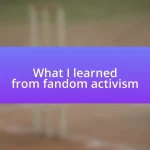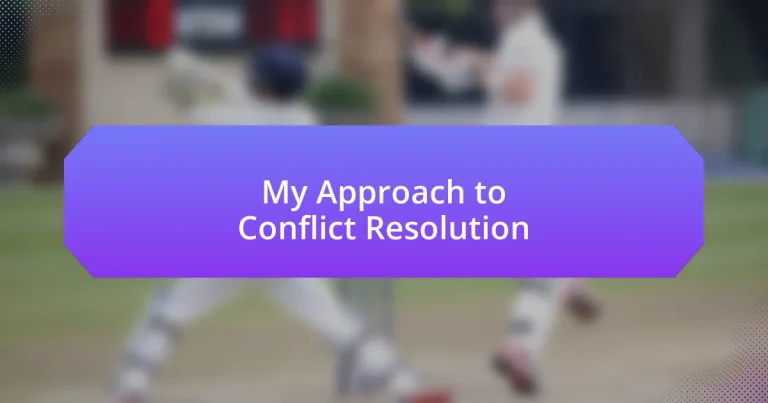Key takeaways:
- Conflict often reflects unmet needs; active listening and empathy can transform interactions.
- Identifying specific conflict triggers, such as poor communication and unmet expectations, helps in resolving disputes.
- Collaborative problem solving and establishing common goals foster a supportive environment for conflict resolution.
- Evaluating outcomes through reflection and feedback enhances understanding and promotes ongoing personal growth.
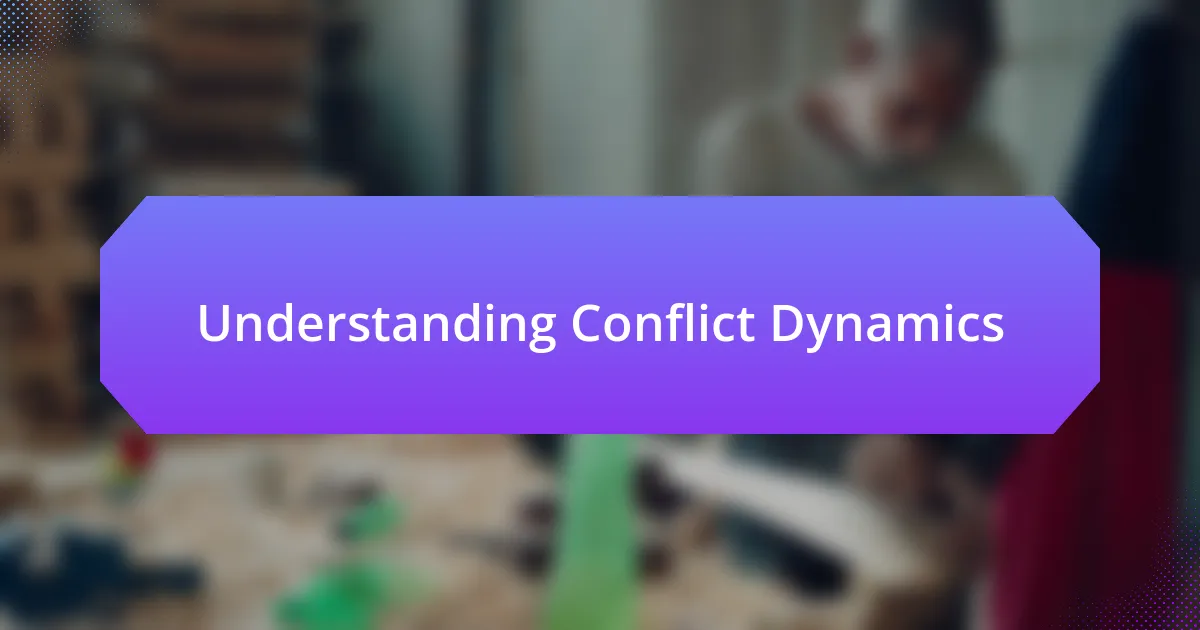
Understanding Conflict Dynamics
Conflict dynamics can be intricate, often shaped by emotions, perspectives, and past experiences. I remember a time when a small misunderstanding escalated into a heated argument with a colleague. Reflecting on it, I realized that our differing backgrounds and communication styles played a significant role in how we interpreted each other’s words.
What I find fascinating is how conflict often serves as a mirror, reflecting our unmet needs or frustrations. For instance, during team projects, I’ve noticed that tension can arise when people feel undervalued or unheard. It makes me wonder—how often do we truly listen to understand, rather than just to respond? This question has encouraged me to adopt a more empathetic approach in my interactions.
Understanding the roots of conflict requires delving into both the emotional and practical aspects at play. I’ve found that asking open-ended questions can reveal underlying motivations that might otherwise remain hidden. This practice has not only helped me diffuse tense situations but has also led to more meaningful connections with others, as I uncover the whys that drive behavior.
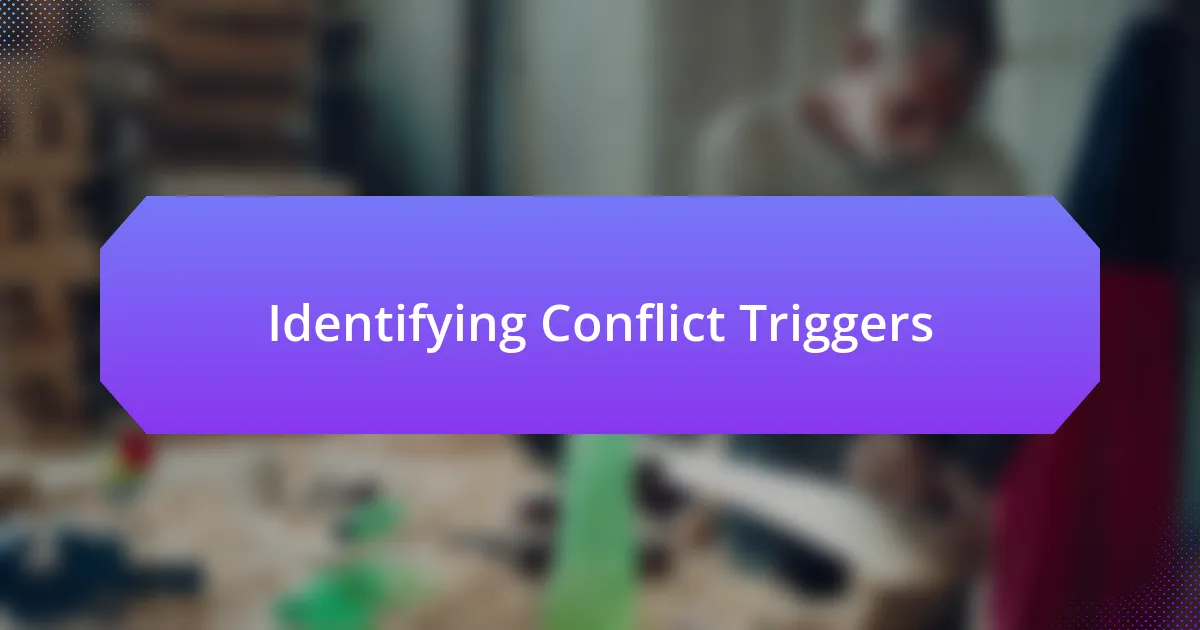
Identifying Conflict Triggers
Identifying what triggers conflict in our interactions can be a revealing process. I remember a meeting where a simple comment about deadlines spiraled into a miscommunication. It was clear that the trigger was not just the comment itself, but the pressure we were all feeling. When we’re under stress, our reactions can often be out of alignment with the actual situation, making it essential to pinpoint specific triggers that fuel these conflicts.
To help identify these triggers, I’ve found it useful to keep a mental or physical list of potential sources of conflict. Here are some common triggers I’ve encountered:
- Poor Communication: Misunderstandings that arise from vague or unclear messages.
- Differing Values: Conflicts rooted in contrasting beliefs or priorities.
- Stress and Timing: High-pressure circumstances can heighten emotional responses.
- Unmet Expectations: Feeling let down when others don’t meet our assumptions or needs.
- Past Experiences: Previous conflicts can create sensitivities that fuel current disagreements.
Recognizing these triggers can lead to more mindful and thoughtful interactions, ultimately paving the way for resolution and understanding.
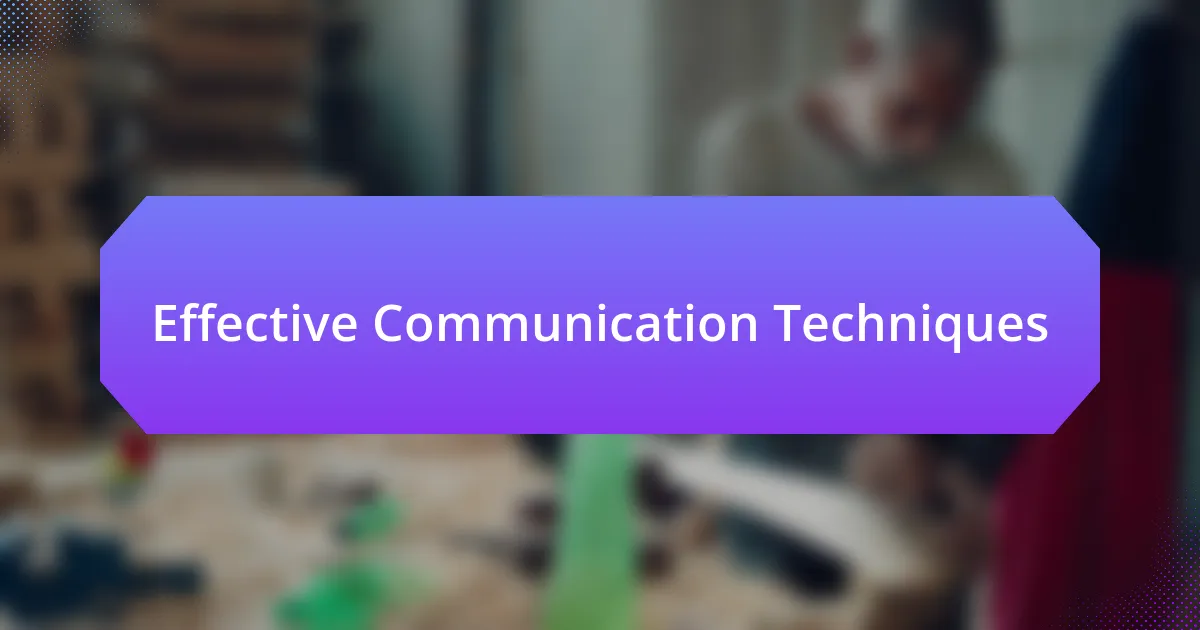
Effective Communication Techniques
Effective communication is a cornerstone of conflict resolution. When I approach difficult conversations, I find that practicing active listening can dramatically change the outcome. For instance, during a recent disagreement over a project direction, I focused on truly hearing my colleague’s perspective. By reflecting back what I heard and asking clarifying questions, the tension eased, and we found common ground.
Nonverbal communication is another crucial element to consider. I remember a time when I was in a heated discussion. My tone and body language were not aligning with my words, which only heightened the conflict. Awareness of your nonverbal cues—like maintaining eye contact and adopting an open posture—can signal to others your willingness to engage constructively.
Additionally, maintaining a calm demeanor sets a positive tone for the conversation. During a conflict with a close friend, I made it a point to take a few deep breaths before responding. This technique helped me articulate my feelings without escalating the situation. It’s fascinating how managing our own emotional state can significantly influence how conflicts unfold.
| Communication Technique | Description |
|---|---|
| Active Listening | Fully engaging with the speaker, reflecting their thoughts, and providing feedback to ensure understanding. |
| Nonverbal Communication | Using body language, eye contact, and tone to convey openness and attentiveness during discussions. |
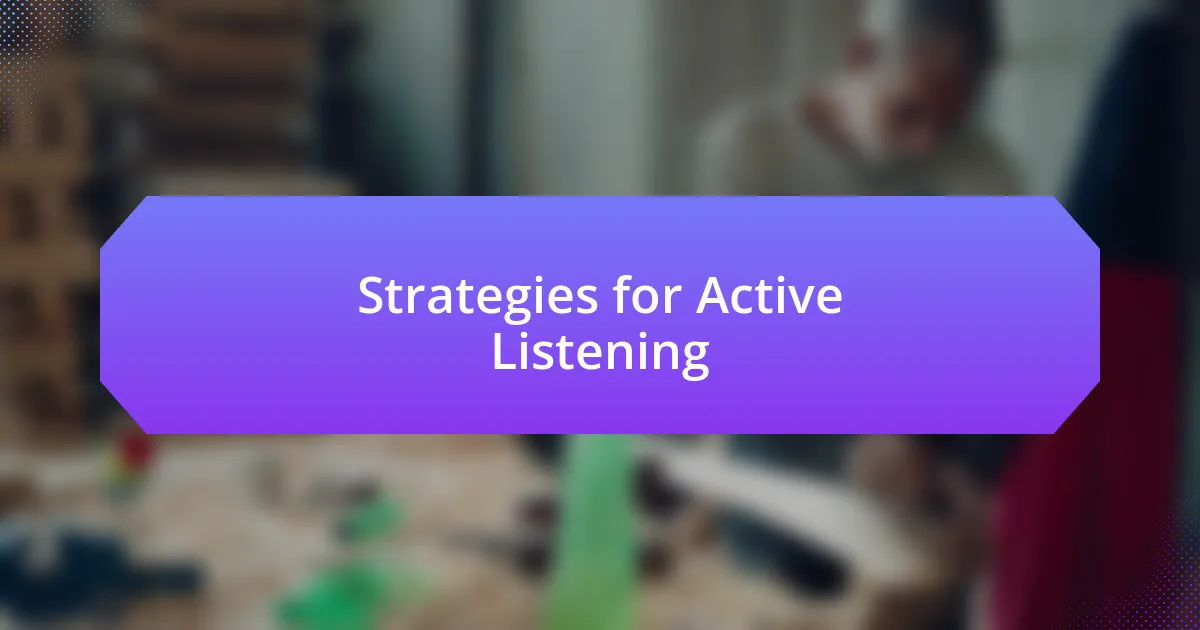
Strategies for Active Listening
One of the most effective strategies for active listening is to practice reflective listening. When someone shares their thoughts, I often find it helpful to paraphrase what they’ve said. This not only confirms my understanding but also shows that I value their perspective. I remember a situation where a colleague expressed frustration about our project timeline. By saying, “It sounds like you’re feeling overwhelmed and concerned about meeting deadlines,” I could see her relax, knowing I was fully engaged.
Asking open-ended questions can also enhance active listening. Instead of yes-or-no questions, I like to prompt deeper discussion by saying, “Can you tell me more about that?” This approach encourages the speaker to elaborate and explore their feelings. I used this technique during a family disagreement regarding holiday plans. By inviting my brother to share his thoughts, we uncovered underlying issues that we had never addressed before, strengthening our bond.
Finally, it’s essential to remain patient and give the speaker time to express themselves fully. I remember feeling anxious when I was eager to offer my opinion during a heated debate. However, I learned that allowing silence can be incredibly powerful. Those pauses not only give the other person space to think but also create an opportunity for deeper reflections. Have you ever considered how silence can aid in understanding? By embracing those quiet moments, I’ve discovered that it often leads to richer conversations and more meaningful resolutions.
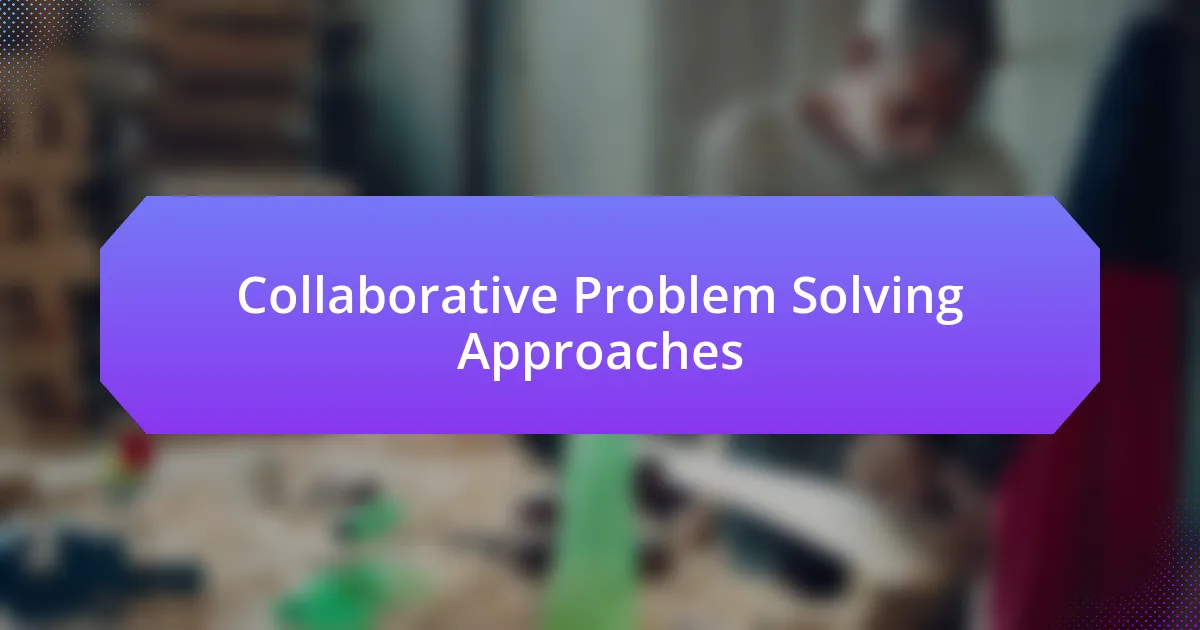
Collaborative Problem Solving Approaches
In collaborative problem solving, I’ve found that brainstorming together creates a sense of ownership. When my team faced a critical deadline, we gathered to share ideas without judgment. This environment ignited creativity and encouraged everyone to contribute. Reflecting on that experience, I recall how one offhand remark sparked a solution that ultimately resolved our issue. Have you ever witnessed how collaboration can lead to unexpected breakthroughs?
Moreover, establishing common goals is vital for a productive collaborative process. I remember an instance during a community project where everyone had different visions for our objective. By focusing on what we all wanted to achieve, rather than our individual preferences, we found a unified direction. This shift transformed our conversations from conflict to cooperation. Isn’t it fascinating how aligning interests can change the dynamics of a discussion?
Lastly, I believe that fostering a culture of respect and trust is paramount. When I faced a disagreement with a close friend, we both recognized that our differing viewpoints stemmed from mutual respect. This understanding kept our conversation constructive instead of confrontational. Isn’t it powerful to think that trust forms the backbone of effective collaboration? It’s amazing how nurturing such an environment can pave the way for fruitful resolutions.
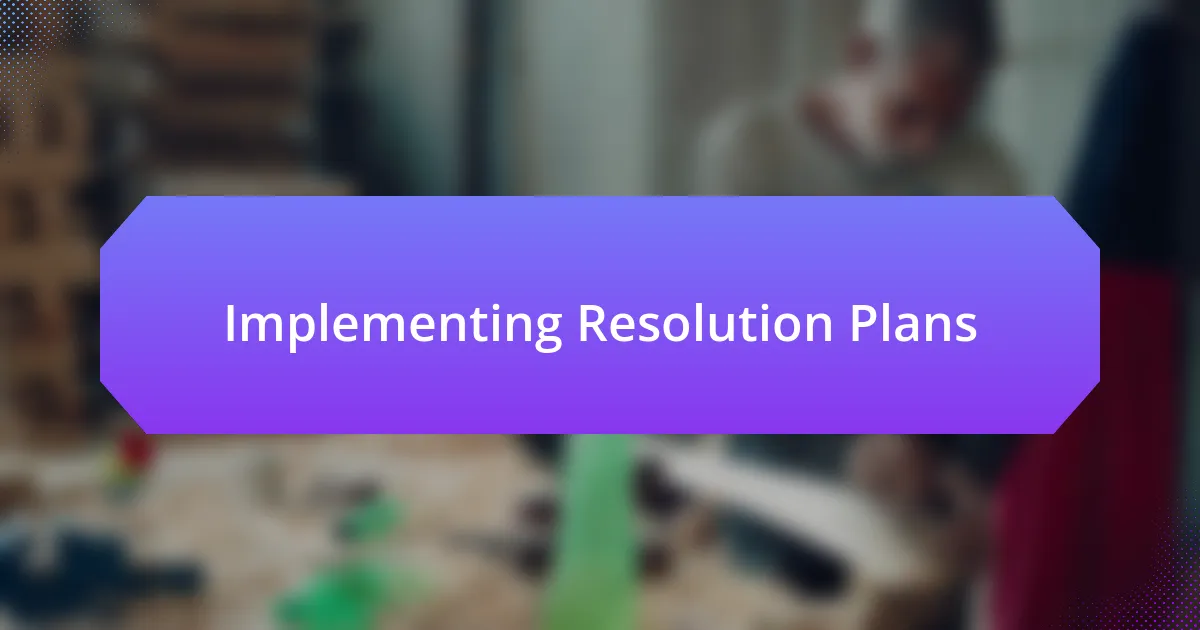
Implementing Resolution Plans
Implementing resolution plans requires clear communication and commitment from all parties involved. I recall a time when my team decided to address ongoing friction over project responsibilities. We sat down and outlined each person’s role in the task, ensuring everyone had a clear understanding of their contributions. Have you ever seen how clarity can defuse tension? It certainly did for us.
One crucial aspect I’ve learned is the importance of flexibility during the implementation phase. Once, while leading a workshop, our predetermined plan hit a snag when some participants proposed an alternative method. Rather than sticking rigidly to our original plan, we took a moment to reassess and even integrate their ideas. That openness resulted in a richer workshop experience. Isn’t it incredible how adapting can lead to better outcomes?
Finally, monitoring progress and being patient are essential. After launching a conflict resolution strategy, I once made it a point to touch base with my colleagues weekly. This not only kept everyone accountable but also allowed us to celebrate small wins along the way. Have you ever noticed how recognition can motivate people? It certainly reinforced our collective effort and fostered a positive atmosphere.
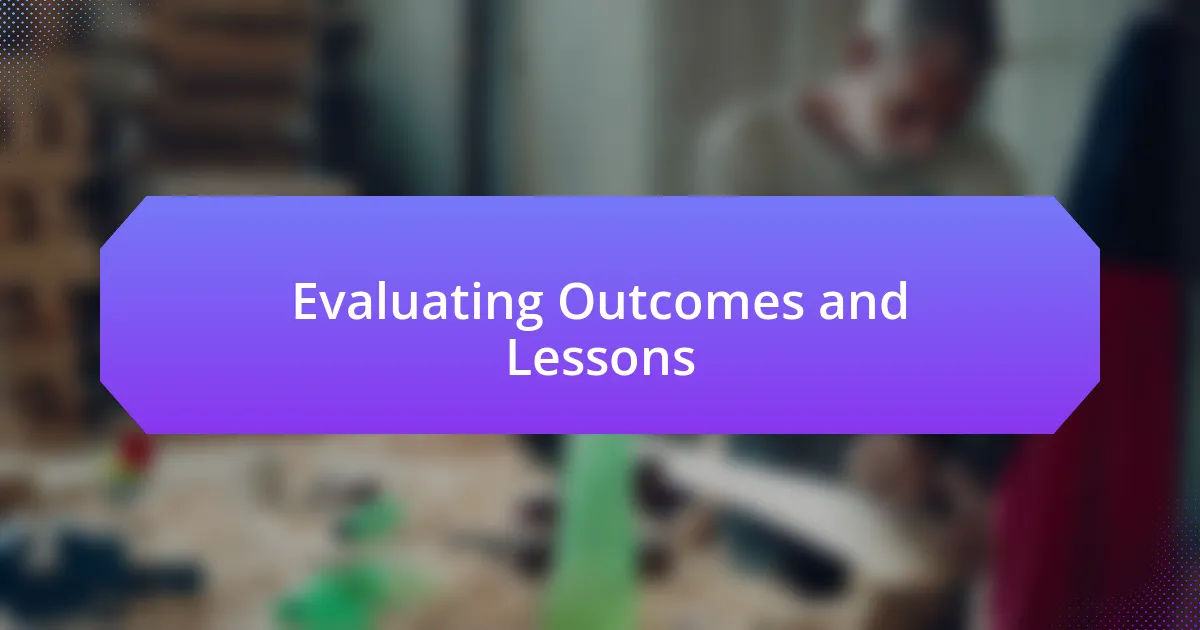
Evaluating Outcomes and Lessons
When evaluating the outcomes of conflict resolution, I find it invaluable to reflect on not just the results but also the methods we used. In one situation, I analyzed a project where we resolved differences through open dialogue. Although the initial disagreement seemed daunting, I learned that by embracing vulnerability and sharing our feelings, we found common ground. Does it surprise you how much honest communication can transform a conflict into a collaborative effort?
Another lesson I picked up was recognizing the power of asking for feedback after resolving a situation. I remember a time when I sought input from team members after we navigated a tense negotiation. Their insights highlighted elements I had overlooked, reminding me that perspectives vary significantly. This experience reinforced my belief that ongoing evaluation is essential—not only to understand what worked but also to identify areas for improvement. Have you ever considered how much you might miss without looking back?
Lastly, I’ve come to appreciate the emotional growth that stems from conflict resolution experiences. Every conflict has taught me something about myself and my approach to others. I can vividly recall feeling frustrated during a particularly tough disagreement, but emerging on the other side, I found a deeper sense of empathy. Isn’t it remarkable how overcoming challenges can lead to both personal and interpersonal development?






